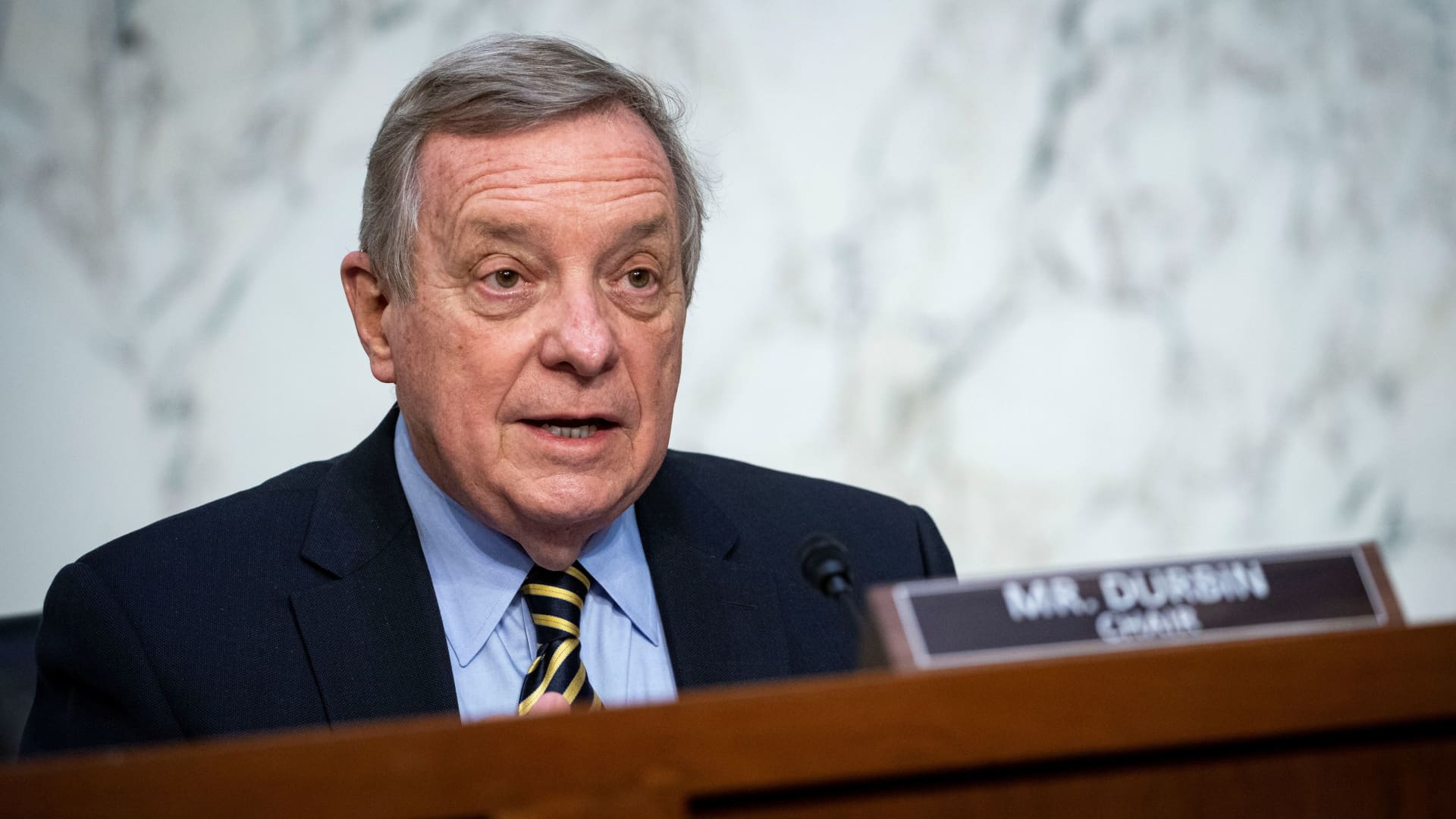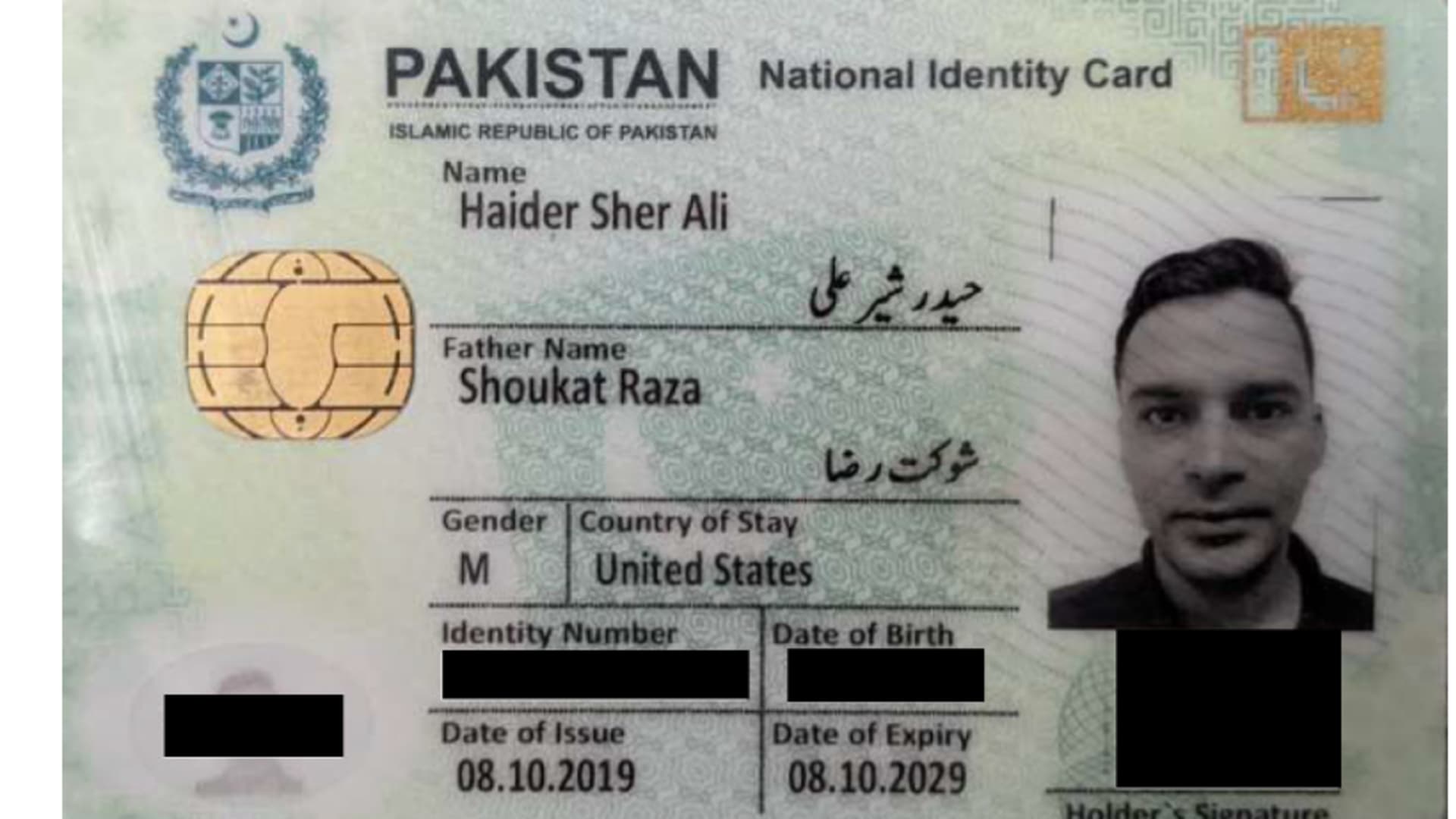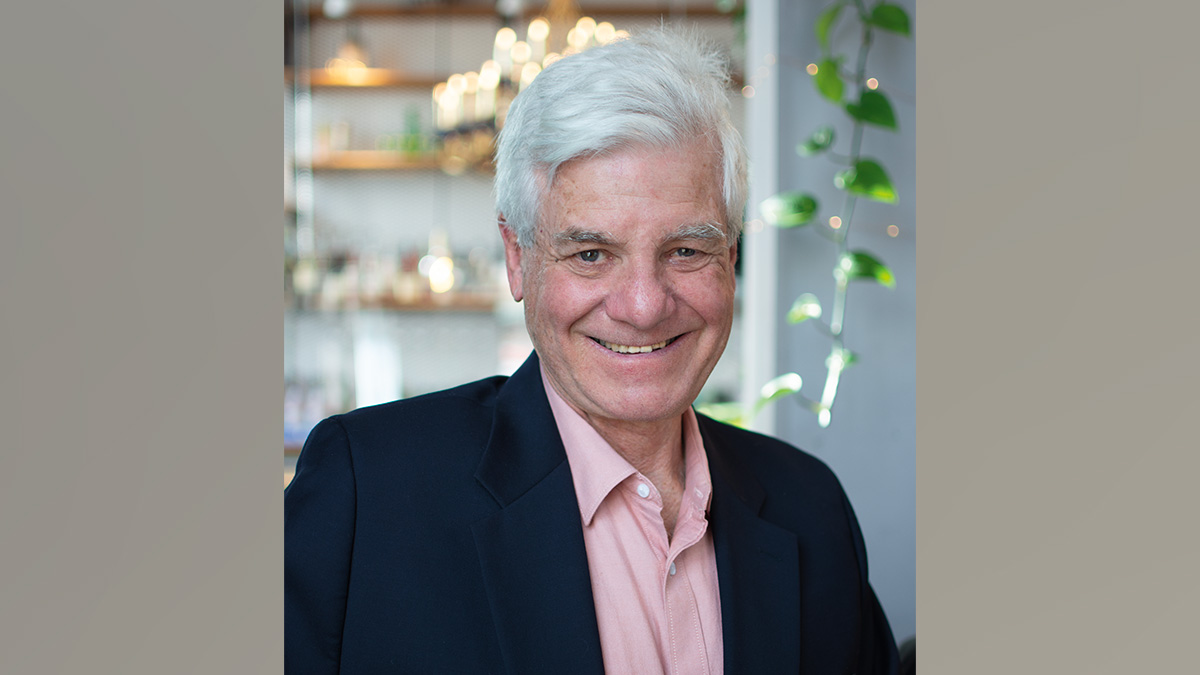Senators relaunch bill seeking to force Supreme Court to televise sessions
The Supreme Court has resisted calls to televise sessions. A senator cited recent rulings on abortion and gun control in pushing for more transparency.

Senate Judiciary Committee chairman Sen. Dick Durbin (D-IL) speaks during Attorney General nominee Merrick Garland's confirmation hearing before the Senate Judiciary Committee, Washington, DC, February 22, 2021.
Al Drago | Pool | Reuters
The chairman of the Senate Judiciary Committee and a leading Republican senator on Thursday reintroduced a bill that seeks to compel the Supreme Court to televise its open court sessions live.
In pushing for the bill's approval, Judiciary Chair Sen. Dick Durbin, D-Ill., cited the Supreme Court's plummeting credibility with the public after recent controversial rulings on abortion and gun control.
The proposed legislation would mandate televised Supreme Court sessions unless a majority of the court's nine justices ruled that such coverage would violate the due process rights of a party appearing before the court.
The Judiciary Committee approved the bill in 2021 by a bipartisan vote of 15-7. But it did not advance much further in Congress.
A related bill, which was also reintroduced Thursday, would permit televised coverage of all publicly open federal court proceedings.
"As trust in the Court hovers near all-time lows, shining a light into the SCOTUS chamber would help strengthen our democracy," Durbin wrote in a Twitter post as he and Sen. Chuck Grassley, R-Iowa, floated the bill again Thursday.
CNBC Politics
Read more of CNBC's politics coverage:
U.S. judge in Texas will soon rule on the abortion pill mifepristone. Here's what could happenTreasury Secretary Yellen says not all uninsured deposits will be protected in future bank failuresChina would be among first paid under GOP debt limit plan, Treasury Secretary Yellen saysSenators re-launch bill seeking to force Supreme Court to televise sessionsSilicon Valley Bank ex-CEO backed Big Tech lobbying groups that targeted Dodd Frank, sought corporate tax cutsTreasury Secretary Yellen says only uninsured deposits at banks deemed a systemic risk will be protectedTrump extends lead over DeSantis in new poll of possible GOP primary fieldTrump super PAC accuses Ron DeSantis of ‘shadow’ presidential bid in ethics complaintDOJ charges Chinese businessman Guo Wengui, associate of Steve Bannon, in $1 billion fraudPfizer will have to pay rebates to Medicare for five drugs under Biden plan to lower Rx costsTop Senate Democrats press DOJ, SEC to investigate whether Silicon Valley Bank executives broke any lawsApple, Amazon, Google will likely get a reprieve from GOP-controlled House on antitrust legislationWarren unveils bill to repeal Trump-era bank deregulation she says led to SVB, Signature collapsesChuck Schumer will give campaign donations from Silicon Valley Bank's ex-CEO, PAC to charityBiden announces new plans to curb gun violence, months after Lunar New Year mass shootingA Supreme Court spokeswoman did not immediately respond to a request for comment.
The Supreme Court long has refused to allow cameras — TV or still — into oral arguments for cases or other proceedings. Because of that, and because of the relatively few seats allotted to the public in the court's chamber, few people ever get to see a Supreme Court argument.
The Supreme Court in 2020 began allowing audio livestreaming of oral arguments in light of the Covid-19 pandemic, which closed public access to the court's building for more than two years.
Many federal district courts, which also do not permit televised access, allowed livestreaming audio or dial-in access for the first time because of the pandemic.
During those two years, the portion of Americans who said they had a great deal or fair amount of trust in the judicial branch of the government headed by the Supreme Court fell from 67% to 47%, according to the Gallup public opinion firm.
That was a record low, by 6 percentage points, since Gallup began polling trust levels in the high court in 1972.
The new low was reached months after the Supreme Court finished a term considered one of the most controversial and consequential, marked by two rulings in particular.
On June 24, 2022, the Supreme Court revoked a half-century-old ruling in Roe v. Wade that had established the constitutional right to abortion. The new ruling, in a case called Dobbs v. Jackson Women's Health Organization, said there was no such federal right, triggering the prohibition of abortion in more than half of the United States.
A day earlier, in New York State Rifle & Pistol Association Inc. v. Bruen, the court overturned a New York gun control law, ruling that people have a constitutional right to carry guns in public for their own protection.
Durbin cited both cases in a statement Thursday calling for televised Supreme Court sessions.
"Rulings made by Justices in our nation's highest court impact the lives of every American, regardless of zip code," Durbin said. "We see an ever-apparent interest for the American people to be able to witness the highest court's proceedings, from seemingly routine sessions to oral arguments in high-profile cases like Dobbs and Bruen, for example."
Grassley, in his own statement, said, "The judicial branch has a massive impact on our daily lives and the lives of generations to come, yet few Americans ever get the chance to see inside the legal process."
"Allowing cameras access to Supreme Court would be a victory for transparency and would help the American people grow in confidence and understanding of the judiciary," Grassley said.

 JimMin
JimMin 
































